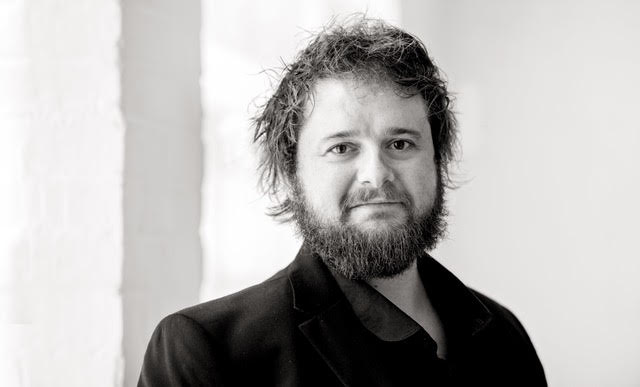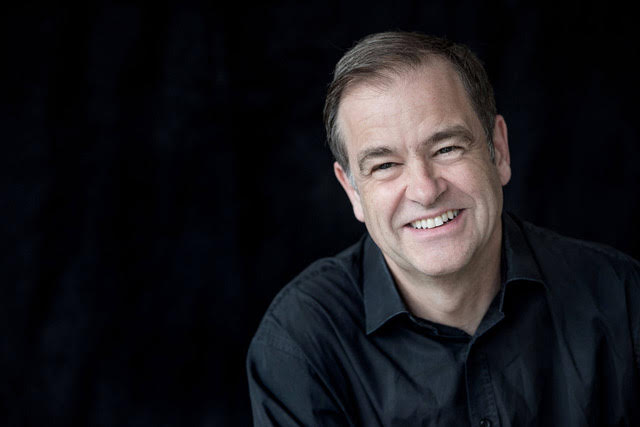This first vocal recital of the year at the Temple Church featured all five of Britten’s Canticles, works spanning nearly three decades and closely connected to the operas from the period after Peter Grimes through to just beyond Death in Venice. The composer did not intend these works as a ‘cycle’ and, avoiding chronological order, they were presented here in a manner that created a satisfying traversal so that the timbres and sonorities of voices, piano, harp and horn were gratifyingly contrasted. If the word ‘canticle’ suggests something sacred or liturgical, which these works are not, they can be more aptly viewed as vocal chamber music. At least, all but Abraham and Isaac which has been described as an operatic scena.
While there was no attempt to present these works semi-staged, reminiscent of Neil Bartlett’s ‘Inspired by Britten’ series at Aldeburgh in 2013, some slight advantage was taken of the Temple Church to enhance the dramatic impact for two of the Canticles – inevitably compromising sightlines for some, and strangely not using the pulpit which was otherwise occupied by Dame Harriet Walter who read the poems in advance of their musical presentation.

And it was with an operatic vocal manner that these works were performed. Indeed, in certain instances, they were startlingly authoritative, with the constant presence of tenor Allan Clayton a fixed point. Many, of course, associate these Canticles with individual singers, possibly those for whom Britten specifically wrote, most notably Peter Pears. My introduction for the first three was via the old EMI recording with James Bowman and Robert Tear. Others may have in their heads the refinement of Ian Bostridge who The Times once asserted ‘you shouldn’t entrust Britten’s settings … to anyone with anything less than Bostridge’s sheer virtuosity and intelligence’. An observation that might also be aimed at Allan Clayton who brought a particular directness and intensity to these performances. Far removed in manner from Bostridge, he made no attempt to imitate singers from the past but made these settings entirely his own whether in the ‘solo’ pieces Canticles I, III, and V, or in the ensemble numbers II and IV.
Admittedly, the ambiguous mingling of religious and erotic imagery that is My Beloved is Mine, drawn from the biblical ‘Song of Songs’, was given a remarkably emphatic account, with little to suggest the sense of confiding in Francis Quarles’ homoerotic paean to love. More a resolute declaration from Clayton, applying an imperious tone to the ‘glittering monarchs’ and explosive attack at ‘so he is mine’. For a work where Britten indicates piano or pianissimo markings for over half of its duration, this account felt unusually assertive, no private confessional that might have been intended in 1947, when one needed to be circumspect about same-sex relationships, but an unabashed public broadcast of passion, and nowhere more triumphant than at the melismas on ‘joined’ and ‘fire’. A breathless excitement swept through the presto ‘nor time nor place…’, Clayton now delivering the lines with an ‘off the voice’ tone but instilled with a concentrated energy.

There followed The Death of St Narcissus, (1974), the last of the Canticles and written at a time when Britten was recuperating from a heart operation and too weak to play the piano in public, hence the scoring for harp and tenor. It’s a setting of an elusive text by T.S. Eliot pruned from The Waste Land and brings together notions of guilt and shame and a preoccupation with the corruption of youth and, implicitly, innocence. Harpist Olivia Jageurs was an ideal partner for Clayton, both in reminding us of Britten’s extraordinarily imaginative instrumental writing and in her understanding of the harp’s evocative role, her playing strikingly desiccated for the saint who ‘felt drunken and old’. Clayton sashayed through its melodic gauntlet with total assurance, seemingly at ease with its blend of austerity and ecstasy, his dynamic range easily traversing the distance ‘between the sea and the high cliffs’.
Next up was Journey of the Magi (1971), where Clayton was joined by fellow Wisemen countertenor Christopher Lowrey and baritone Marcus Farnsworth (replacing an indisposed George Humphreys). The intertwining of the three voices glowed like a star in the East, where unanimity of individual voices and personalities was fused into one single entity. Each scene was vividly captured: the faltering ride to Bethlehem – courtesy of Julius Drake’s sensitive accompaniment – the nervous anticipation of the winter journey itself, the drunken camel men, and the eventual arrival with those whole tone scale figures at ‘satisfactory’, the sense of exoticism and mystery fully explored.
Still falls the Rain (1954), introduced renowned horn player Richard Watkins for Britten’s setting of Edith Sitwell’s verses, a passionate commentary on the destruction of London in 1940. The work’s economy of means prompted Michael Kennedy to describe the piece as ‘Britten in a hairshirt, flagellating his soul on behalf of a suffering humanity’. Clayton’s opening stanza was sung with almost a numbed desolation, his ‘white’ tone suggesting disbelief for the barbarity of man’s inhumanity to man. Watkins’ mellow tone provided all that was needed to intensify the impact of Sitwell’s words, his virtuosity increasingly evident in each successive variation of the opening twelve-note theme. For the final redemptive lines, Clayton and Watkins faced one another on either side of the piano for the closing counterpoint, a cathartic and composite sound that cleverly brought pre-echoes of Abraham and Isaac.
Canticle II, originally written for Pears and Kathleen Ferrier in 1952, sets the story of Abraham and Isaac – as told in the medieval mystery plays – artfully evokes the spirit of Henry Purcell in its flowing interchange of recitative, arioso, and duet. Clayton as Abraham and Lowrey as his young son Isaac opened by turning their backs on the audience, singing resonantly into the open piano lid as if to summon the voice of God. The ensuing dialogue was most effectively sung, Clayton firm yet suffused with anxiety for his sacrificial pledge and Lowrey’s pure voice bringing fear and compliance. Attention to words and tuning were impeccable. No less flawless was the sustained tension from Drake’s searching piano accompaniment, his resounding tremolo just before God intervenes between father and son the dramatic climax.
In short, these were cherished and powerful performances where singers and instrumentalists brought all their experience to bear on furnishing outstanding accounts, Dame Harriet Walter providing room for reflection with her eloquent verse readings.
David Truslove
Allan Clayton (tenor), Christopher Lowrey (countertenor), Marcus Farnsworth (baritone), Julius Drake (piano), Olivia Jageurs (harp), Richard Watkins (horn), Dame Harriet Walter, (speaker)
Britten: Canticle I: My Beloved is Mine, Canticle V: The Death of St Narcissus, Canticle IV: Journey of the Magi, Canticle III: Still falls the Rain, Canticle II: Abraham and Isaac.
Temple Church, London; Thursday 22nd February 2024.
Photos of artists by Sim Canetty-Clarke.